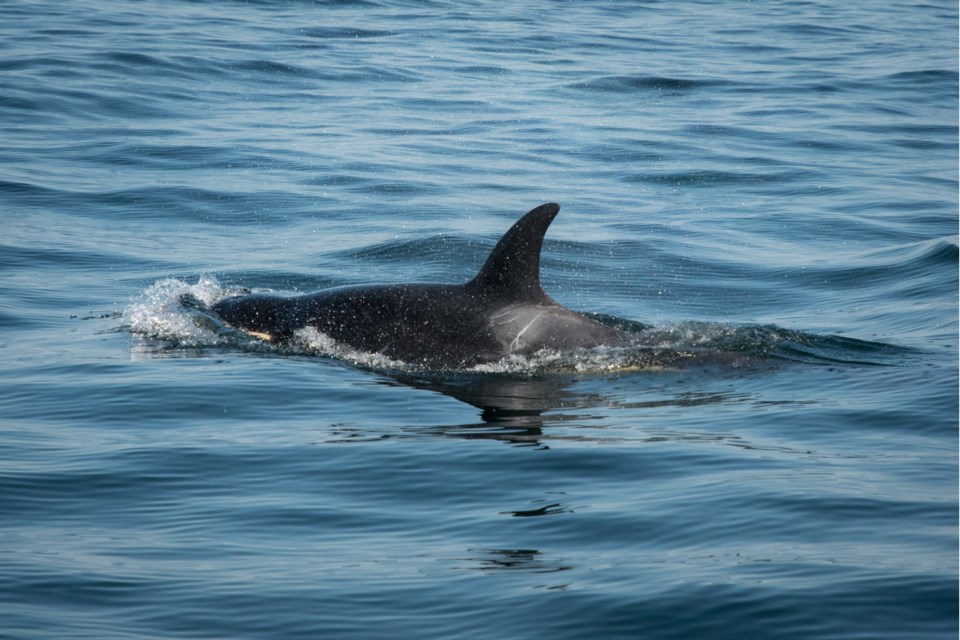A joint Canada-U.S. rescue team has managed to inject an emaciated killer whale with antibiotics, but researchers still fear for the orca’s survival.
Dr. Martin Haulena, head veterinarian at the Vancouver Aquarium, was with the team Thursday and observed the three-year-old female orca known as J50 or Scarlet for the first time.
“I will say that having not laid eyes on her personally before, it was dramatic how thin she is,” he said Friday.
“When we first picked her up she was by herself. So that first meeting with this incredibly skinny little whale, that was by herself, was quite worrisome.”
> For more on the region's orcas, go to timescolonist.com/more
Haulena said J50 did rejoin her pod and appeared to be breathing and moving well and showed no obvious signs of skin abnormalities. Her underweight body condition, however, remains “incredibly concerning,” he said.
“The facts remain that other whales that have been in this condition have not survived. To us, she is still a critical whale.”
Haulena said the response team used a dart to inject J50 with a dose of antibiotics that lasts seven to 10 days. The team later obtained a breath sample that will be tested to try to determine why the young whale is ailing.
“There were very few risks to the animal with one shot of long-lasting antibiotic, but the potential gain was quite large,” he said.
“Unfortunately, at this point, with the limited ability to diagnose the condition of the animal, a lot of what we’re doing is trying to treat what is treatable — treat things that have been the cause of morbidity and mortality in whales that are either under human care or based on pathology from stranded killer whales.”
Haulena said the veterinary team advising the joint rescue effort is recommending that researchers focus now on J50’s eating and digestive patterns and try to get a fecal sample.
The team is also considering trying to feed a live chinook salmon to J50. If successful, the same technique might be used to deliver medication in the future.
“A lot of pieces would have to come together for the right conditions to initiate that trial,” said Lynne Barre, southern resident killer whale recovery co-ordinator with the U.S. National Oceanic and Atmospheric Administration.
“Our goal there is to see if this is a viable option to provide oral medication.”
Scientists have become increasingly concerned about the health of J50, whose birth in December 2014 offered hope for the future of endangered southern resident killer whales. The population has dwindled to just 75 whales and J50’s potential reproductive ability was seen as a way to boost those those numbers.
In June, however, researchers noticed that she appeared malnourished and suffering from “peanut head” syndrome, in which weight loss creates shadows and divots behind the skull.
Sheila Thornton, a research scientist with Canada’s Department of Fisheries and Oceans, said J50’s condition seems to have worsened since then.
“I think that’s one of the things that’s most worrisome to me, that not only is she not improving, it looks like she’s deteriorating over the period of time when we would expect to see the condition improve,” Thornton said.
DFO officials are urging whale-watching companies and others to assist with recovery efforts by staying at least 500 metres away from the orcas.
Meanwhile, DFO confirmed that an adult female whale, J35, was sighted Thursday, still carrying the carcass of her dead calf more than two weeks after it perished July 24. Officials have said they have no plans to intervene in what appears to be an extended grieving process.



